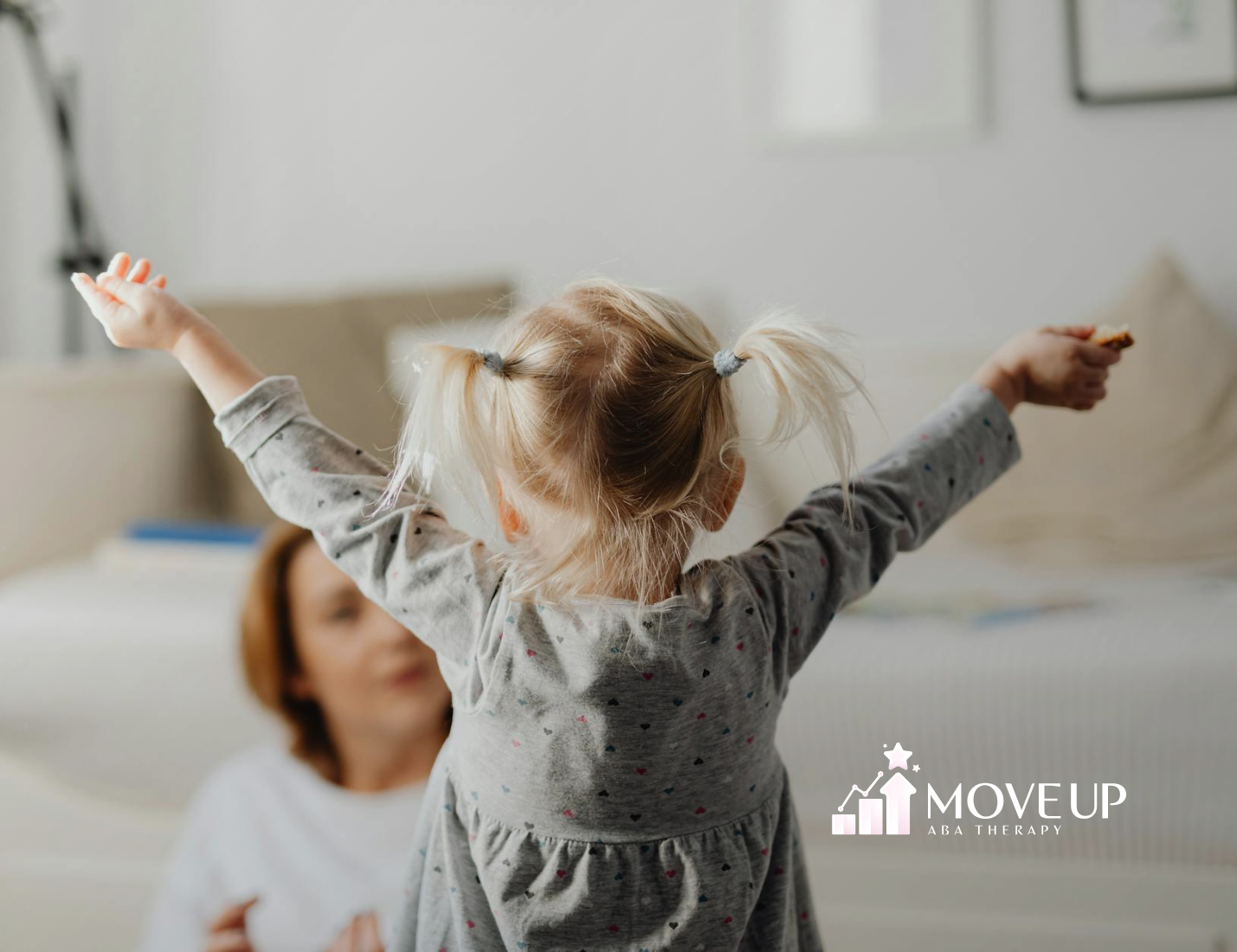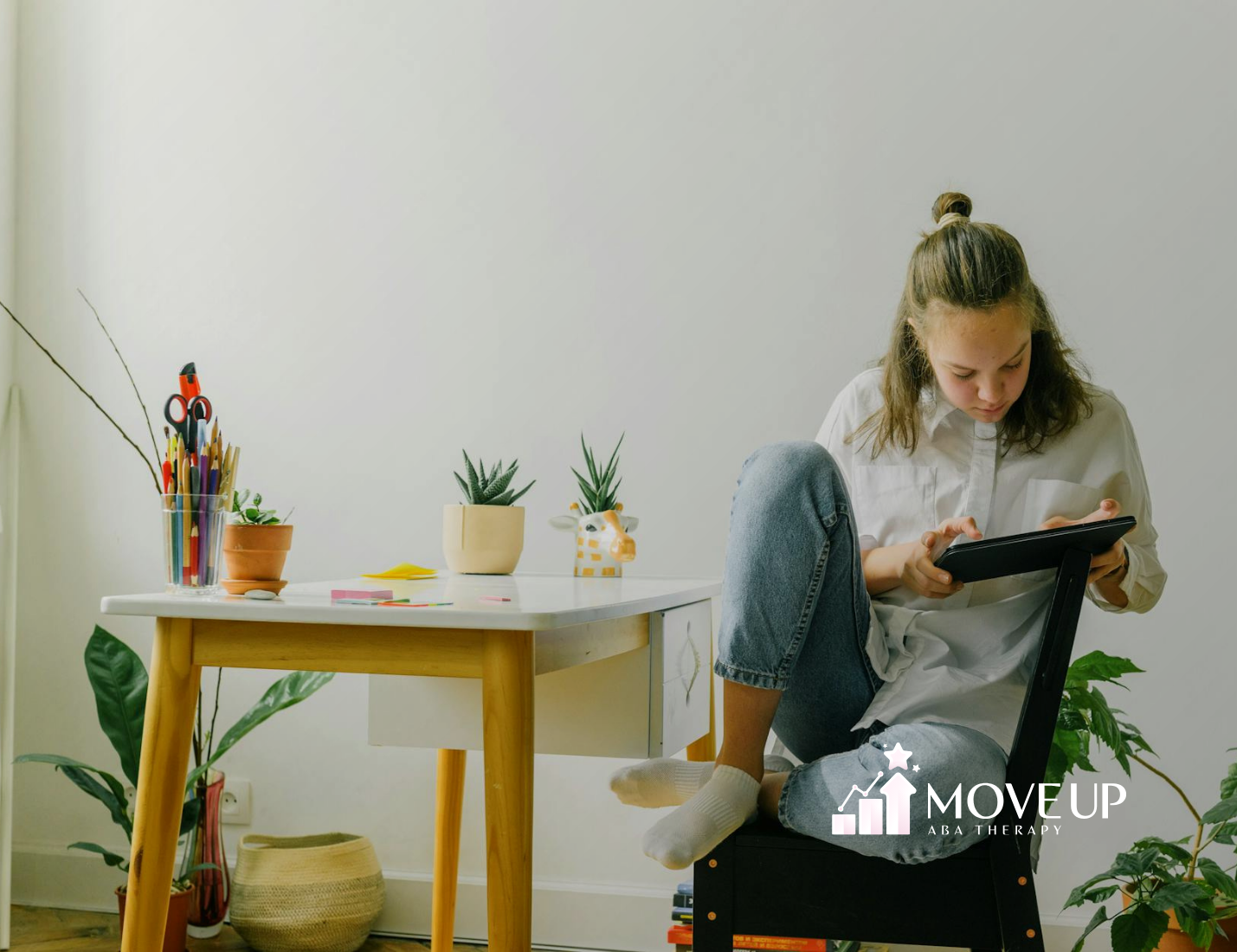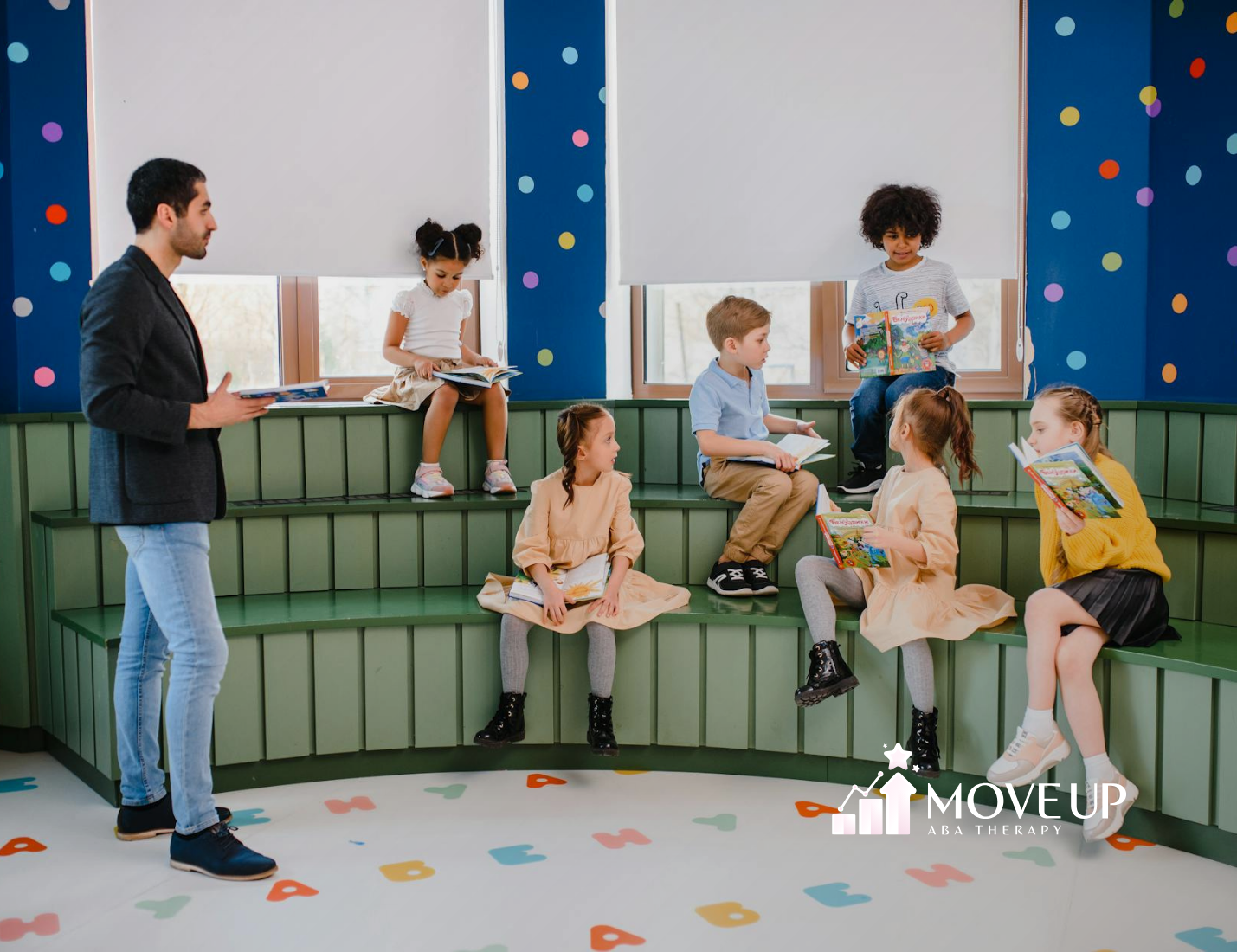ABA therapy, also called applied behavior analysis, is a well-known way to help children on the autism spectrum learn everyday skills. It uses what your child already knows and likes to help teach communication, social skills, and better behavior. By doing this, ABA therapy gives your child new ways to handle the world, so they feel more sure of themselves. The work can happen in lessons that are planned or through fun activities. Every part of ABA therapy is meant to help your child’s quality of life and give them more independence. This way, your child can get the most out of each day and improve their life skills.
Understanding ABA Therapy for Children
ABA therapy is much more than just doing simple drills. It uses science to help improve specific behaviors. This approach is made for children with autism spectrum disorder. The main goal is to help your child learn and grow in different places and ways.
This therapy changes to fit your child’s interests and what they can do. This makes it good for them. With well-planned activities and steady support, ABA therapy can work on tough spots, help your child learn new skills, and bring real change to everyday life.
What Is ABA Therapy and Its Purpose?
ABA therapy, which stands for applied behavior analysis, is based on the scientific study of how people learn and act. This way of helping your child uses proven ways to work on significant behaviors. It teaches your child good ways to interact and get along in the world.
ABA programs are set up to help your child get better at social interactions, language development, and handling their day-to-day life. They focus on breaking down hard things into small and easy steps. Doing this helps your child pick up new skills faster and with less stress.
ABA therapy always looks at real progress that can be measured. This supports changes that last a long time. If your child needs help with language, social situations, or wants to have less challenging behavior, behavior analysis can give your child the support they need. Over time, it will help your child become more independent and sure of themselves.
Who Benefits from ABA Therapy?
Children on the autism spectrum often get the most benefit from ABA therapy. There is a focus on each child’s unique needs, and ABA sessions are set up just for them. These sessions help with things like problems with talking, behaviors that happen over and over, or trouble with social skills.
An ABA therapist will work with you and your family to build a treatment plan that fits your child. For example, if your child finds it hard to make friends, there may be activities for turn-taking and learning about feelings. ABA therapy helps kids learn important life skills in this way.
ABA therapy works very well for younger kids, especially if they get it early. But this type of care is good for older kids too. Programs are made to fit the child’s age and what goals they have, so every child can make progress over time.
Core Principles Guiding ABA Sessions
Each ABA therapy session is built on important ideas that help your child do well. A key part is personalizing the treatment plan. This means every plan is made for your child, based on what your child likes, does well, and finds hard.
Another big part is tracking your child’s progress all the time. Therapists use data to see how your child is doing. This helps them adjust the plan so your child gets the best results. These ideas make sure the aba therapy is not only helpful but also matters in your child’s life.
Individualization and Goal Setting
One-size-fits-all is not the way to go in ABA therapy. The main thing is to focus on your child’s needs, so goals in the treatment plan are made just for your child. Therapists look at areas where your child needs help, like working on expressive language or being able to handle daily tasks.
Goal setting in ABA therapy is a team effort. Therapists, parents, and certified behavior analysts all work together. They make sure goals are clear, can be measured, and your child has a good chance to reach them. For example, if your child has a hard time making eye contact, the treatment plan will include steps to help your child do it a bit more during social interactions.
By making ideas fit just your child and celebrating each small win, ABA therapy lets your child go forward, step by step. This helps your child’s quality of life get better, one day at a time.
Data Collection and Progress Monitoring
Tracking progress through data collection is crucial in ABA therapy. Therapists monitor your child’s behavior regularly to ensure that specific goals are being met. Here’s what the process looks like:
| Element of Data Collection | Purpose |
|---|---|
| Frequency Tracking | Tracks how often a behavior (e.g., saying “please”) occurs. |
| Duration Recording | Measures how long a specific activity (e.g., playing with blocks) lasts. |
| Trial Results | Records the success rate of goals, like identifying objects in a session. |
Using this information, ABA therapists adjust approaches, ensuring your child gets the most out of each session. This methodical process guarantees steady progress and keeps treatment in line with your child’s evolving needs.
Common ABA Therapy Activities for Kids
ABA therapy sessions use both structured and playful ways to help your child learn. These therapy sessions include tasks like discrete trial training and fun activities in your child’s natural environment. These two methods give a mix of direct lessons and easygoing learning.
In these therapy sessions, your child learns important life skills. They start to understand how to talk about what they need, handle their behaviors, and join in with other people. Each session gives your child the chance to do more on their own and builds their confidence. Every activity in ABA therapy is meant to help your child grow and do well.
Discrete Trial Training (DTT) Basics
Discrete Trial Training (DTT) is a structured way to help your child learn new skills. It uses repetitive practice and positive reinforcement. In each session, the therapist gives simple instructions. Then, your child gets a chance to respond. Your child gets immediate feedback, which can be praise or rewards. This helps your child learn positive behaviors.
DTT breaks difficult tasks into small steps. This makes it easier for your child to learn communication skills and build social interactions. You can adjust DTT to fit your child’s unique needs. This is a great way to help your child work on functional communication and stay involved in therapy sessions.
Natural Environment Teaching (NET) in Practice
Natural Environment Teaching, or NET, uses activities that match your child’s real life and what your child likes. An ABA therapist will use your child’s favorite toys and take part in social situations. This helps make learning feel like play. Your child can build social skills and functional communication by doing these things in their natural environment. These skills are learned during real moments, not just in a classroom. This makes your child’s quality of life better. With NET, analysis is included in day-to-day talks and actions. This helps your child practice new skills while being in places and moments they know well. It turns every day into a good chance to learn something important.
Skill Development Areas in ABA
ABA therapy helps your child learn important skills by using activities that fit their needs. It mainly works on things like communication, social interactions, and everyday tasks.
In ABA programs, your child may use visual aids to talk or join in pretend play. This gives them a chance to build confidence. By focusing on these skills, ABA therapy supports your child’s whole growth. It helps your child thrive in their way.
Building Communication Skills
Communication is at the base of being independent, and ABA therapy puts focus on this skill for your child. In therapy, the teacher uses different methods that match the expressive language your child has. This makes it easier for your child to talk and connect with others.
Functional communication training, known as FCT, is a common tool in ABA therapy. It helps to change tough behaviors by using clear words or movements. For example, your child might learn to say “help me” instead of getting upset. Using things like picture cards or visual aids can help kids say what they want and need in a way that is easy to understand.
As time goes by, these ways help your child get more words and feel sure about talking to people. It lets them have better social interactions and improve how they reach out to others every day.
Enhancing Social and Play Skills
Socially engaging activities are a big part of ABA therapy. In these programs, your child does things like pretend play or different games to practice turn-taking, sharing, and understanding other people’s feelings.
Some ABA programs have pretend play, too. Your child might use dolls or toys to act out ways people talk with each other. This helps your child see emotions and how people react. Building better play skills is very important, as it helps children learn how to make friends and get along with other people.
When your child keeps practicing these things over time, they start to feel more at ease in social situations. This makes it easier for them to connect with others.
Behavior Management Techniques Used
Behavior management in ABA therapy uses ways to help replace hard behaviors with better ones. Therapists look at why these actions happen, so they can help your child learn the right way to respond.
They use positive reinforcement to help your child show good behavior. For example, your child may get praise or a small reward for doing something good. Therapists also use things like functional communication and functional communication training. This helps your child find other ways to share when they feel upset or frustrated.
All these methods can help your child get better at self-control. This can also help your child adjust better to many things in life.
Positive Reinforcement Strategies
Positive reinforcement is one of the best ABA techniques. Your child learns that doing something good leads to a reward. This makes them want to show that behavior again.
For example, if your child politely asks for their favorite toy, they may get it right away as a reward. Verbal praise, extra playtime, or a high-five are great ways to reinforce appropriate behavior.
ABA therapists pick rewards that match your child’s interests, so learning feels good and real. With time, positive reinforcement helps your child get the inner motivation they need to do well on their own.
Addressing Challenging Behaviors
Challenging behaviors, like tantrums or when someone tries to avoid something, are best managed by finding out what causes them. In ABA therapy, people try not to use negative reinforcement. Instead, they teach your child to change specific behaviors by using methods like functional communication training.
For instance, instead of throwing toys, your child can learn to say, “I’m frustrated.” This is functional communication. When your child uses words, these tough behaviors will happen less often as time goes on.
With ABA therapy, there are clear steps and steady help. This makes your child feel safe and supported when dealing with their feelings and how they react.
Conclusion
To sum up, learning about the activities in ABA therapy helps you see how it can support your child as they grow. This includes methods like discrete trial training and natural environment teaching. Each method is made for your child and what they need, helping build important skills, such as talking with others and getting along in social settings. The main ideas behind ABA therapy are to give each child what fits them best and to watch their progress closely. This way, the sessions help your child well and keep them interested. You can do even more for your child by joining in on these sessions. If you are thinking about ABA therapy for your child, you can contact us for a free talk with our team. Learn how ABA therapy can help your child and bring about good results.
Frequently Asked Questions
How long does a typical ABA session last for children?
ABA therapy sessions can last from one hour to four hours. The exact amount of time depends on what your child needs. An ABA therapist will plan the schedule to help your child learn as much as possible in that time each day.
What types of goals are set in ABA therapy?
Goals in ABA therapy are made to fit your child’s unique needs. The goals can be things like helping your child improve specific behaviors, get better at life skills such as self-care, or build on communication and social interactions. The treatment plan shows all these objectives in detail.
Can ABA therapy be used at home as well as in clinics?
Yes, ABA therapy can be done at home and in clinics. The treatment plan can be changed to fit different places. This helps your child learn skills in places they know well and in more structured settings, too.
At what age should a child start ABA therapy?
Starting ABA therapy early is good for the child. Most children begin between 18 months and five years old. Early intervention helps the child with their unique needs fast. It makes a big difference for communication, social interactions, and behavior. With help from a certified behavior analyst, your child can get the support they need right away.
How do parents participate in ABA therapy sessions?
Parents take part in ABA therapy by joining the sessions and picking up helpful ways to teach their child. They use what they learn to support their child at home. Being involved means looking for what your child is interested in, helping with new skills, and keeping things the same every day for your child. This helps your child keep growing and learning with ABA therapy.
Sources:
https://www.autismspeaks.org/applied-behavior-analysis
https://my.clevelandclinic.org/health/treatments/25197-applied-behavior-analysis
https://childrensautismcenter.org/6-life-changing-benefits-of-aba-therapy-for-children-with-autism/
https://www.autismspeaks.org/expert-opinion/what-discrete-trial-training
https://www.connectncareaba.com/blog/natural-environment-teaching-net







